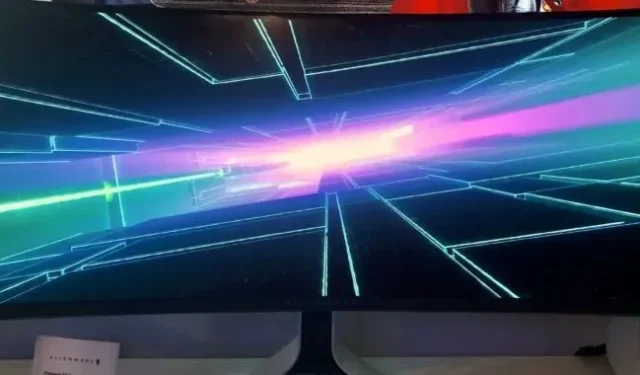Alienware QD-OLED monitor shows high price of new Samsung technology

We now have an idea of how long QD-OLED screens will last compared to the OLED panels we know today.
OLED is already an expensive, high-end display technology, but Samsung’s QD-OLED brings quantum dots to the technology, promising image enhancements and improved color gamut. We’re still waiting to find out how much QD-OLED TVs will cost, but the first PC monitor with this technology, coming this spring, will cost $1,300.
Samsung Display announced QD-OLED, or Quantum Dot-Organic Light Emitting Diode, last month, with TVs and monitors expected this year. The new type of OLED panel is supposed to deliver the same deep blacks and rich contrast ratios that make OLED popular with HDR users, gamers, and anyone else looking for crisp images. The difference is that the new technology uses a blue OLED material that passes through a layer of quantum dots. This setting is supposed to produce vibrant colors regardless of the screen’s brightness setting, as well as more detail in selected areas. (For a more in-depth look, check out our story explaining what QD-OLED is.)
Alienware AW3423DW is the first computer monitor to use a QD-OLED panel. The screen claims 99.3 percent of the DCI-P3 color space, and at 250 nits, its typical brightness is expected to be lower than many current LED monitors. However, it can hit 1,000 nits in a smaller test area, which could help it deliver more detailed highlights, as promised by QD-OLED. The monitor is also certified for VESA Display HDR 400 True Black, which requires a black level of 0.0005 nits, max. The AW3423DW features a 3440×1440 ultra-wide OLED panel with a 21:9 aspect ratio and a 175Hz refresh rate.
At $1,300, the AW3423DW will be priced higher than anything in Alienware’s current monitor lineup. The company’s current most expensive display, the AW3821DW, still has some advantages, the most obvious being its larger 37.5-inch size. The AW3821DW is also VESA Display HDR 600 certified, so it will be at least 600 nits of brightness when playing HDR content. The Alienware Large Monitor also has a higher resolution, 3840×1600, with a lower refresh rate of 144Hz. Now it costs 1200 dollars.
However, the AW3821DW is an LED-backlit IPS panel and there are plenty of other similar options on the market. Color is the biggest advertised benefit of QD-OLED, and the non-OLED Alienware AW3821DW claims 3 percent less color gamut (95 percent DCI-P3) than the QD-OLED variant.
OLED alternatives
The AW3423DWl is pricey, but it offers a smaller ultra-wide panel than most OLED monitors, which tend to be limited by TV sizes. Rare desktop-sized options, like the 32-inch LG UltraFine OLED Pro, are aimed at professionals and come with price tags to match—the LG monitor sells for $4,000. Other 4K resolution OLED monitors with a maximum refresh rate of 120Hz.
This leaves us with large OLED monitors. The Gigabyte FO48U 48-inch OLED gaming monitor is currently available for $1,200 (or $1,000 at some retailers after a $200 discount). That’s a lot more screen for $100-$300 less than Alienware’s new display.
Samsung Display stated that QD-OLED should be as good or better than OLED in burn-in management. The Alienware QD-OLED monitor has a three-year limited hardware warranty, and the company said in January that owners would receive a new monitor “the next business day”if the device failed.
What about QD-OLED TVs?
QD-OLED will play a big role in the high-end TV wars, and Alienware’s QD-OLED pricing gives us a glimpse into the future.
It’s unclear when the QD-OLED TVs expected from Samsung and Sony will get firm pricing and release dates. In fact, a report this week by South Korean tech site The Elec claimed that Samsung Display (which makes panel technology) and consumer-facing Samsung Electronics have yet to agree on pricing. Samsung has not confirmed this message.
Leave a Reply